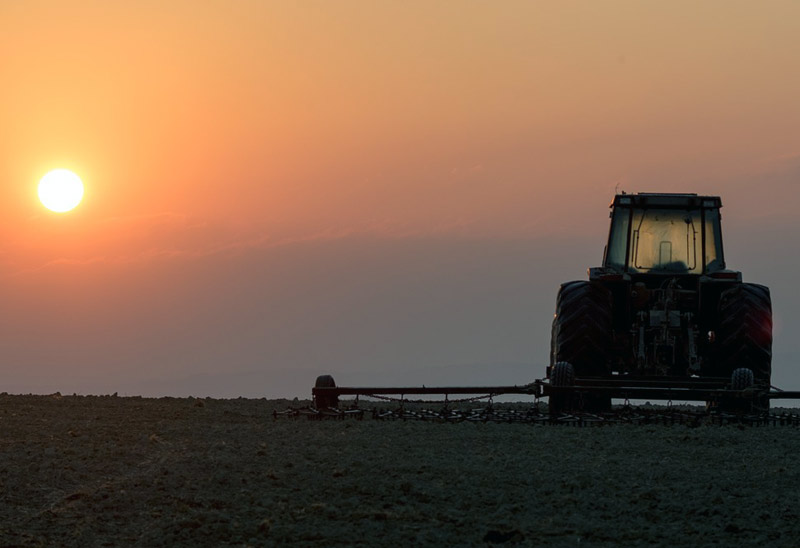The weather in Georgia can be challenging for a farmer. For maximum crop yield, we need just the right amount of rain at the right time. Let’s take a look at the best conditions for planting and at what’s in store in the coming seasons.
How’s the weather?
2018 was something of a mess. March and April were chillier than usual, followed by record-breaking heat and drought in early May. Then tropical storm Alberto blew in, bringing record rains, and we went from bone dry to soaking wet. The erratic weather patterns made farming pretty difficult in some parts of the Southeast!
Fortunately, the rest of the year and next spring is looking pretty good.
According to NOAA‘s long range weather forecast, Georgia farmers can expect normal levels of rain through October 2018, and then it’s going to get a little more wet than normal. Wetter conditions will last through February 2019, and return to normal in March.
The Old Farmer’s Almanac adds that winter will be a bit warmer than normal with the coldest weather in early January and early February, and summer will be hot!
While dry weather and extremely wet weather pose different problems, they are equally devastating to farming. The best time to plant is when soil is moist and crumbles easily in your hand.
Dealing with drought
When weather is hot and dry, the ground bakes and plants get pretty thirsty. If it looks like you’re in for a long dry spell, there are steps you can take to prepare your farm for drought:
- Choose an irrigation system designed to minimize water loss through evaporation, percolation, and runoff.
- Build a water retention system to collect rainwater: ditches alongside fields, a pond, or storage tanks. Be sure to check local ordinances before damming a stream or digging a pond.
- Install a device that measures irrigation water to ensure you aren’t wasting it.
- Use water conservation tillage practices to add organic matter to the soil.
- Soil can dry out quickly in the heat, so be sure to monitor soil moisture. With a little experience, you should be able to evaluate soil moisture by feel.
- Establish riparian buffers along the banks of water sources to help keep rivers, streams, and ponds clean.
- Plant drought-resistant crops that mature quickly.
- Mulch with organic materials or black plastic mulch to keep weeds down and retain soil moisture.
No drought is predicted through 2019 – what a relief! It looks like happy planting weather all year. Of course, we never know when a tropical storm or hurricane will dump tons of rain.
When it’s way too wet
When the rain won’t stop falling, farmers have to deal with more than just slipping and sliding in that slick Georgia clay. According to Southern States Agronomist Eddie McGriff, certain nutrients tend to leach out of the soil more than others. “Nitrogen, potassium, sulfur and boron have a higher tendency to be leached out of the soil,” McGriff says. Poor nutrient content in the soil stunts plant growth.
This year, Georgia peanuts suffered from the deluge of rain. Whole crops were stunted. Strawberries, blueberries, and small grains also suffered. Grapes were affected by fungus and poor pollination – bees won’t fly in constant rain.
There’s not much you can do about heavy rain. Your best bet is to watch your plants carefully and monitor the soil to make sure there are sufficient nutrients.
Knowledge is power
The best weapons in your farming arsenal are knowledge and timing. Know when to expect extreme weather, and be ready to plant and harvest when the time is right….bearing in mind upcoming weather patterns. Don’t worry, there are farmers weather apps to keep you up to date:
Weather Forecast – New Holland This free app was designed by New Holland to be the essential app for farmers. It provides the weather data and agriculture news you need to operate.
Weather Underground and WunderStation are free apps from Wunderground that pull together input from users and professional meteorologists to provide a complete picture of weather, including current photos, webcams, and reports supplied by other users.
Dark Sky uses GPS data to tell you exactly, to the minute, when it will start (or stop) raining. Not in your area or your city, but right where you’re standing. You can set all kinds of weather notifications to alert you when something happens – like rain, wind speed, or a temperature threshold.
Old Farmer’s Almanac – why not? Farmers have been depending on them since 1792! According to the Almanac, “Each edition of Almanac Extra! contains feature articles on subjects that have defined The Old Farmer’s Almanac as a “calendar of the heavens” for centuries—topics such as astronomy, weather, gardening, nature and the outdoors, farming, food, anniversaries, and, of course, the calendar itself.”
SetPoint Agriculture is a customizable weather application designed specifically for the agriculture industry. Users select 5 to 10 locations, and then set custom weather alerts for each location.









